There is no such thing as too much knowledge, especially when it comes to health. That is why in this article I want to talk about such a problem as viral conjunctivitis. Treatment, causes, symptoms, prevention of the disease - this will be discussed now.
At the very beginning, you need to understand the terms that will be actively used in the article. So what is conjunctivitis? This is a disease that is characterized by an inflammatory process in the eye area. To be more precise, suffers in this case namely the conjunctiva (this is a thin mucous membrane that is designed to cover the sclera and the inner surface of the eyelid).
If we are talking about a disease such as viral conjunctivitis, treatment, symptoms, causes - that's what you need to know about. And it is best to start with the causes of the disease. Important point: the type of disease directly depends on the cause of its occurrence.
If we talk about children, then the most common cause of the disease is infection in the eyes with dirty hands. Also, inflammation may be preceded by beriberi, various allergies and chronic rhinitis (in this case, inflammatory processes in the sinuses may also be present).
If we are talking about adults, then the cause of the disease is most often a long stay of a person in places strong congestion dust, the action of various aerosols and other chemical substances. It is also worth mentioning that other diseases that affect the eyes can also provoke an ailment: blepharitis, meibomitis, astigmatism, farsightedness, myopia.
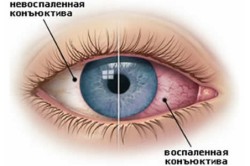
We go further, looking into the topic "treatment of viral conjunctivitis, its symptoms and varieties." It should be noted that depending on the subspecies of the disease, the symptoms will also differ. What signs can tell that a person has this particular disease?
The cause of viral conjunctivitis is very often the most common cold or sore throat. An important point: the disease is contagious, so it can often lead to small epidemics (the disease affects all family members or other small groups where a person often visits).
This form of the disease - viral conjunctivitis - is of three types:
This subspecies of the disease is contagious, the causative agents are adenoviruses. various types. Outbreaks of the disease are observed in the autumn-spring period most often in children's groups. The disease is transmitted by airborne droplets, sometimes when the virus enters directly on the mucous membrane. Symptoms for this subspecies of the disease are as follows:
At the very beginning, the mucous membrane of the eye becomes inflamed, then the infection itself occurs. Interesting fact: in children, this form of the disease is much easier than in adults. The duration of the incubation period is 8 days. Adenovirus conjunctivitis can be of the following three forms:
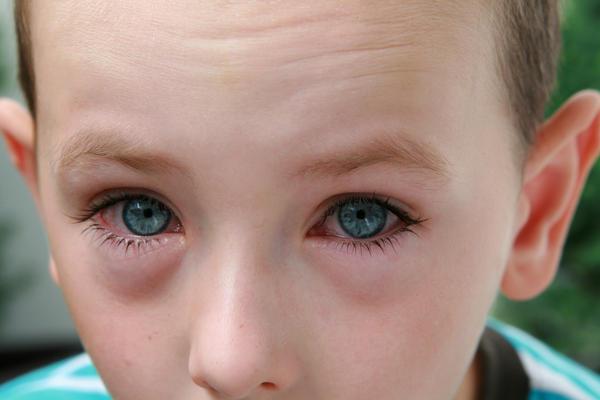
We further consider such a disease as viral conjunctivitis: symptoms of the disease, prevention and treatment. What will be the symptoms if we are talking about such a subspecies as herpetic conjunctivitis? First of all, it is worth saying that the causative agent of the disease is a virus. herpes simplex, which falls on the shell of the eye.
This disease has a long course. Most often, the disease occurs in children, while, as a rule, only one eye is affected.
This is another kind of a disease such as viral conjunctivitis: causes, treatment. As the name implies, this type of disease is highly contagious. It mainly affects adults. In this case, whole groups get sick. One of the types of adenovirus causes the problem. Infection occurs through household items: shared towels, underwear, handshakes. Important: from the moment of infection to the onset of the first symptoms, it can take a whole week. Main symptoms:
The duration of the disease is about two months. However, if a person has been ill with epidemic keratoconjunctivitis once, he develops immunity to this disease. re-infection it can not be.
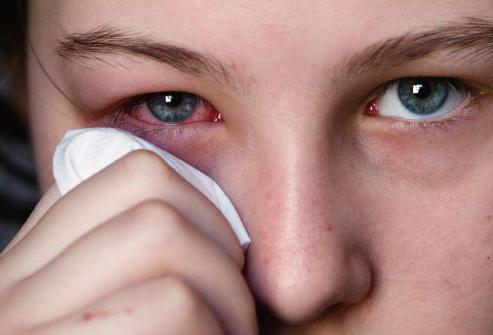
How to understand that a person has viral conjunctivitis (after all, treatment depends on the correct diagnosis)? So, it is worth saying that to determine the disease at home, without having medical education, very hard. After all, there are many subspecies of conjunctivitis. In this case, at the first symptoms, it is best to go to the clinic. You need to make an appointment with an ophthalmologist. At the same time, in addition to examining the eye, the doctor will need cytological and bacteriological examination smear taken from the mucous membrane of the eye affected by conjunctivitis. And only after the doctor makes an accurate diagnosis, the correct treatment can be prescribed.
If a patient has viral conjunctivitis, treatment with drops is the first way to get rid of the disease. Local treatment is essential in this disease. In this case, the doctor may prescribe the following drugs (local antibiotics):
Important: you need to use the drops correctly. The bottle itself must be kept clean. The tip of the dispenser, which may touch the eye, must be disinfected periodically.

If the patient has a viral conjunctivitis, treatment should be carried out not only locally. So, systemic getting rid of the problem will be very important. In this case, depending on the subspecies of viral conjunctivitis, the following drugs may be prescribed:
What should a person who has been diagnosed with viral conjunctivitis do? Treatment of viral conjunctivitis - here's what to look for Special attention. So, in addition to the above, the patient can also be prescribed drugs of the so-called "artificial tears". For example, it can be a drug "Refresh Plus". It is necessary in order to maintain the mucous membrane of the eye in proper condition. The drug is used for several weeks. However, it should be said that it is best to use disposable vials, and the tip of the dropper must be periodically sterilized.
What is needed if the patient has membranous viral conjunctivitis? Treatment. The drugs in this case will be somewhat different. So, if the membrane interferes with visual acuity, the doctor may prescribe topical steroids. In some cases, even steroids may be prescribed. eye ointments. These can be drugs such as Fluorometholone or Dexamethasone. If the patient has just this form of viral conjunctivitis, the treatment will be quite long and intensive. Ointments will need to be used about 4 times a day. The duration of treatment will depend on the results (on average - from two to three weeks).
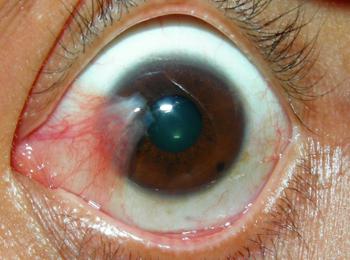
With a disease such as viral conjunctivitis, treatment in adults can be carried out using drugs that are commonly called corticosteroids in medicine. However, their use today is controversial. Some doctors consider their use normal. Others say that their use can lead to complications.
Having learned enough about such a disease as viral conjunctivitis (treatment, symptoms in children and adults), it is worth saying that oral antibiotics are not required in this case. With viral infections, these drugs are powerless.
So, viral conjunctivitis. Treatment of viral conjunctivitis should also be accompanied by certain preventive and safety measures. What will be relevant in this case?
If the patient is diagnosed with viral conjunctivitis, treatment with folk remedies will also help relieve inflammation.
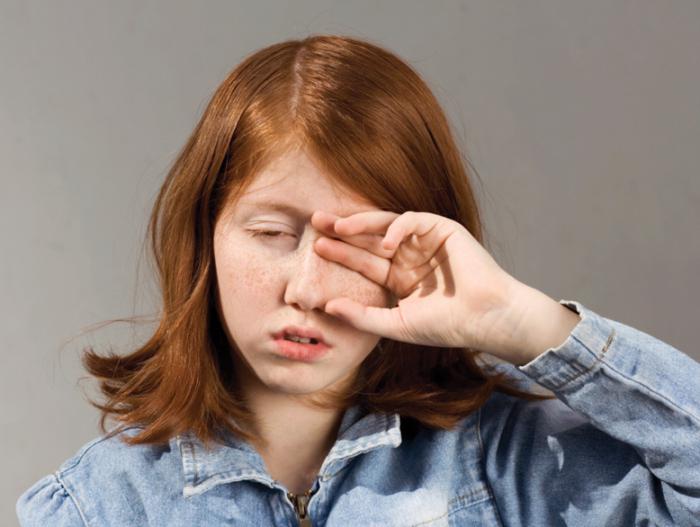
If a person does not want to earn a disease such as acute viral conjunctivitis (the treatment of which is long and costly), preventive measures are important:
Conjunctivitis is an inflammation of the lining of the eyelids and eyeball. The most common bacterial, viral, allergic form of this disease. Often diagnosed fungal and atypical chlamydial form of conjunctivitis. Viral conjunctivitis occurs with the same frequency in both adults and children.
This disease occurs as an independent pathology (as a result of the introduction of herpes viruses, shingles, Coxsackie virus, adenovirus, enterovirus into the body), and as a result of damage to the patient's systemic viral infection-, rubella, mumps, measles,.
If adenovirus type 3,4,7 has entered the body, acute pharyngoconjunctivitis develops, if the type of adenovirus corresponds to type 8 and 10, the diagnosis is “epidemic keratoconjunctivitis”. Symptoms of a viral lesion of the mucous membrane of the eyes occur simultaneously with the development of inflammation of the upper respiratory tract. The development of the disease in most cases occurs on the mucous membrane of both eyes. If the infection initially concentrates on one eye, it still soon affects the other organ of vision.
Approximately 2/3 of total number cases of viral conjunctivitis occur as nosocomial infections. The contagiousness of the disease is quite high. It spreads by contact, transmitted by close contact, through the hands. The airborne route of infection with this form of conjunctivitis is unlikely.
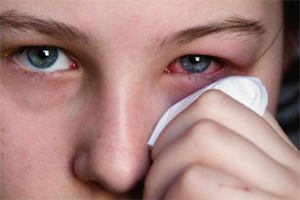
The latent (incubation) period of this disease is 4-12 days. This means that the symptoms of pathology may appear after such a period of time after contact with the source of infection.
After the latent course of infection, symptoms of viral conjunctivitis appear:
Follicles form on the mucous membrane of the eyelids.
Irritation nerve endings and an increase in the vessels of the mucous membrane of the eye leads to reddening of its tissues, the appearance of itching and lacrimation.
A mucous discharge appears on the conjunctiva, this symptom quickly passes from one eye to another.
With the help of palpation, painful lymph nodes located in front of the ears can be detected.
The patient feels as if there is in the eye foreign body he develops photophobia.
Due to clouding of the cornea, vision is reduced, this symptom partially remains for 2 years after recovery.
If inflammation of the mucosa occurs against the background of a viral infection (measles, influenza, rubella, mumps, chicken pox), the main direction of therapy is to combat the manifestations of the underlying disease. Symptoms of viral conjunctivitis are relieved by washing the eyes with herbal infusions with an antiseptic effect, using eye drops with interferon. After symptoms disappear viral disease, manifestations of conjunctivitis also go away.

This type of conjunctivitis is transmitted by airborne droplets, affecting, along with the mucous membrane of the eyes, also the nasopharynx. Outbreaks of adenoviral infection in children's groups take on the character of an epidemic.
Symptoms of the disease:
The combination of adenoviral conjunctivitis with catarrhal phenomena in the nasopharynx is characterized by hyperthermia up to +39°C, an increase in the anterior lymph nodes.
The conjunctiva and eyelids turn red, no a large number of mucus.
There is lacrimation, photophobia.
If the disease takes a follicular form, films or follicles form on the mucosa.
Corneal lesions are extremely rare.
Diagnosis of a complex lesion of the conjunctiva and upper respiratory tract, which is of a viral nature, is carried out on the basis of cytological, virological and serological laboratory research.
Treatment of viral conjunctivitis is carried out with drops of Albucid (sulfacyl sodium), as a universal medicinal product with any form of conjunctivitis.
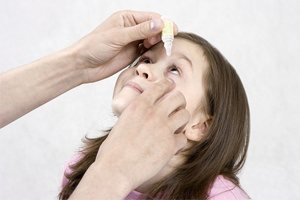
Oftalmoferon- contain human interferon, which determines its antiviral and anti-inflammatory properties as an immunomodulator. Therapeutic dose - 1-2 drops 6-8 times a day in the acute period, then 2-3 times a day until complete recovery.
Poludan- used for treatment eye infections caused by the herpes virus and adenovirus. Drops are created as a result of biosynthesis based on cytokines and endogenous interferons. Therapeutic dose - 1-2 drops 6-8 times a day in the acute period of the disease, then - 3-4 times for 7-10 days.
Aktipol- created on the basis of endogenous interferon, which gives them antiviral and regenerative properties to restore the mucosa. Possesses the qualities of the strongest antioxidant. Therapeutic dose - 2 drops up to 8 times a day for 10 days.
As prescribed by the doctor, the treatment of viral conjunctivitis is carried out with antiviral ointments. They are used both in pediatrics and for the treatment of adult patients. Before laying the ointment for children, it is required to carry out a small preparatory work. The eyes are washed with antiseptic infusions of tea, sage, chamomile (if these herbs are not allergens for the patient), Albucid or interferon drops are instilled. After 30 minutes, you can apply the ointment. All drugs should be used only after consulting a pediatrician or pediatric ophthalmologist.
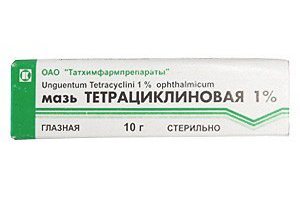
Florenal- used to treat eye infections caused by varicella-zoster, herpes simplex and herpes zoster, adenovirus. Therapeutic dosage- in the conjunctival sac 2-3 times a day for 10-45 days.
Tebrofenovayaointment- used to treat all types of viral conjunctivitis, used 3-4 times a day.
Bonafton- used to treat conjunctivitis caused by adenovirus and herpes simplex virus. Therapeutic dosage for adults - 0.1 g 3-4 times a day for 2-3 weeks, for children - 0.025 g 1-4 times a day for 10-12 days.
Found a mistake in the text? Select it and a few more words, press Ctrl + Enter

The herpes virus, having got into human body, affects not only the skin, but also the mucous membranes of various organs, including the mucous membrane of the conjunctiva of the eye. The most common infection agents are herpes Zoster, herpes, less often -.
Symptoms of herpetic conjunctivitis:
Unlike adenovirus, the herpes virus only affects one eye.
Symptoms of inflammation are erased, the process develops slowly.
Appear herpetic eruptions on the eyelids, on the skin around the eyes, as well as itching, burning, mild pain, lacrimation.
Insignificant mucous discharge in the catarrhal form of conjunctivitis, purulent - in case of attachment bacterial infection. Such manifestations require the use of antimicrobial drugs.
The follicular form of herpetic inflammation is characterized by the formation of follicles on the mucous membrane of the eye, with the vesicle-ulcerative form, erosions and ulcers form on the mucous membrane.
A complication of herpetic conjunctivitis is a lesion of the cornea (herpetic keratitis).
Treatment of this type of viral conjunctivitis is carried out as directed by an ophthalmologist. The doctor recommends antiviral, anti-inflammatory drops and ointments containing interferon.
The skin of the eyelids is treated with brilliant green.
Ointments against the herpes virus are placed in the lower conjunctival sac - Zovirax, Virolex, Bonafton, Acyclovir, Florenal, Tebrofen ointment.
If the lesion occupies a significant area of the skin of the eyelids, around the eyes, Acyclovir, Valtrex, immunomodulators are additionally used orally on the recommendation of a doctor.
To avoid the addition of a secondary bacterial infection in herpetic conjunctivitis, Erythromycin or tetracycline ointment is applied to the mucous membrane of the lower eyelid twice a day for 1-2 weeks. For the purpose of prevention, eye drops containing an antibiotic (Tobrex) are used.
Date: 05.02.2016
Comments: 0
Comments: 0
Eye diseases are diverse in their manifestations and quantity. AT recent times viral eye disease has become very common. Now there are more than 150 viruses, most of which, to one degree or another, can affect the organs of vision. That is why doctors today pay special attention to solving this problem.
- in last years this species eye diseases became very common. Such ailments are highly contagious and often acquire the character of an epidemic. Various viruses can cause conjunctivitis.
Adenovirus conjunctivitis - viral nature this disease has only recently been elucidated. Adenovirus conjunctivitis is characterized by the following symptoms:
Doctors distinguish 3 forms this disease:

Herpetic conjunctivitis - in this disease, the cause of eye infection is the herpes simplex virus. In most cases, herpetic, while, as a rule, the infection affects only one eye. This disease is characterized by a sluggish and prolonged course.
Doctors distinguish 2 forms of herpetic conjunctivitis:
 Epidemic keratoconjunctivitis - this disease is very contagious and can affect a huge number of people at once. The cause of the development of epidemic keratoconjunctivitis is one of the types of adenoviruses. Most often, the infection enters the body through medical instruments, unclean hands, dirty linen. As a rule, at first the disease affects one eye, and only then it spreads to the second. After about a week, the patient's condition suddenly improves and almost all symptoms disappear. But after a couple of days, the symptoms return and intensify. Epidemic keratoconjunctivitis can be recognized by the following symptoms:
Epidemic keratoconjunctivitis - this disease is very contagious and can affect a huge number of people at once. The cause of the development of epidemic keratoconjunctivitis is one of the types of adenoviruses. Most often, the infection enters the body through medical instruments, unclean hands, dirty linen. As a rule, at first the disease affects one eye, and only then it spreads to the second. After about a week, the patient's condition suddenly improves and almost all symptoms disappear. But after a couple of days, the symptoms return and intensify. Epidemic keratoconjunctivitis can be recognized by the following symptoms:
Back to index
Another viral eye disease is uveitis. He is general concept, which denotes inflammation of various parts of the choroid of the eye. It should be noted that this disease is diagnosed in almost 50% of cases of inflammatory eye lesions. In 30% of cases, uveitis leads to low vision and then to blindness.
Many factors can cause this disease, but most often uveitis is caused by various infections. The infectious agent in this disease is most often the herpes simplex virus, less often cytomegalovirus and herpes zoster.
Symptoms of viral uveitis:

The high prevalence of this disease can be explained by slow blood flow in the uveal tract and an extensive vascular network of the eye. This feature to some extent contributes to the detention in choroid eyes of harmful microorganisms.
In most cases, viral uveitis is treated with anti-inflammatory drugs and drugs that reduce discomfort.
Back to index
Viral keratitis is an inflammatory lesion of the cornea caused by a viral infection. Most often, the elderly or even very young people suffer from this disease.
The inflammatory process with such an ailment can be of 2 types:
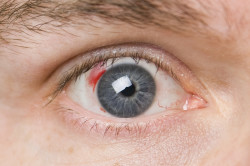
Viral keratitis can be caused by adenoviruses, varicella-zoster viruses, mumps, herpetic infection, measles. There are a number of predisposing factors that can lead to the appearance of viral keratitis: violation of the integrity of the cornea, frequent stress, weakened immunity, hypothermia.
This disease is characterized by the following symptoms:
The viral form of keratitis is usually treated with immunomodulatory, antiviral and antibacterial agents. Quite often, patients are prescribed antibiotics, analgesics, and physiotherapy is prescribed. If necessary, specialists perform keratoplasty or scrape off the affected epithelium.
Viral conjunctivitis - acute inflammatory disease sclera and mucous membrane of the eyelid, caused by a virus. It is typical for him high level contagiousness, so an epidemic can develop. In many cases, the cause of the development of inflammation are herpes viruses. Viral conjunctivitis of the eyes in children in groups of preschool and school educational institutions is spreading at an incredible rate, so it is quite common.
Viral conjunctivitis of the eye can become a complication that has developed against the background of a cold. In such cases, it is accompanied by classic manifestations colds: present cough, runny nose, fever. Diagnosis is based on the overall clinical picture, but we must not forget that there is a possibility of a combination of infections - when a pathogenic microorganism joins the virus. Treatment will focus not only on the elimination of symptoms and inflammation, but also on the elimination of the original cause of conjunctivitis - i.e. fight against a certain virus. When viral conjunctivitis occurs, folk remedies can only be used as an additional treatment.
Viruses are the most common cause of ocular viral conjunctivitis in adults. There are more than 150 viruses that can adversely affect human health.
Viral inflammation of the conjunctiva most often occurs as a consequence transferred sore throat, a serious cold. Very often it develops against the background of reduced immunity. In young children, the trigger for the onset of the disease may be eye contact with dirty hands.
Sick children are not recommended to go to school and preschool institutions. In cases of disease acute conjunctivitis in preschool institutions, children who are in contact with the sick person should be prophylactically instilled into the eyes with a 30% solution of albucid for up to 3 days.
Given ophthalmic disease affects both eyes, although at the initial degree, inflammation appears only in one.
Photo 1. A child can bring an infection with dirty hands
Viral conjunctivitis can be triggered by the following types:
Due to the fact that viral conjunctivitis is generally curable, patients do not attach enough importance to high danger these diseases - a sufficiently large contagiousness (the ability to infect others) and frequent development complications (for example, it is possible to cloud the cornea - the transparent membrane of the eye, which can lead to blindness).
A respiratory infection often enters the eyes, passing through the sinuses, and thus becoming the cause of viral conjunctivitis of the eye.

Photo 2. Sometimes the virus enters the eyes through the sinuses
Depending on which virus is caused inflammatory process, the symptoms are different. However, there are a number common features, which include:
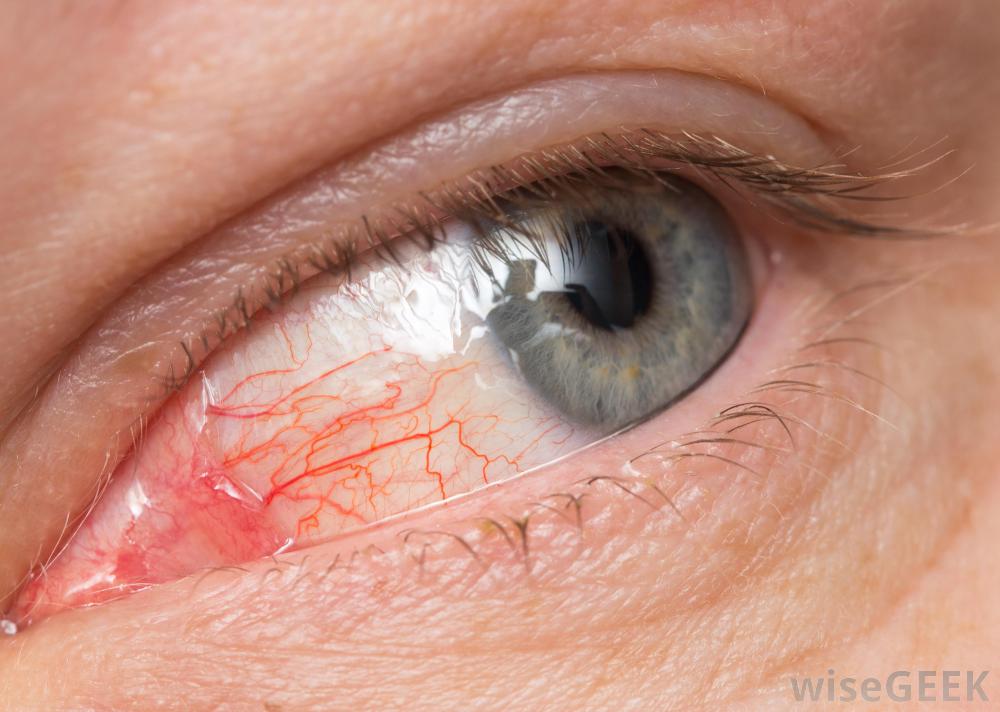
Photo 3. Redness of the mucous membrane of the eye - a sign of conjunctivitis
Herpetic conjunctivitis is caused by the herpes simplex virus. First, one eye is affected, but later the manifestations pass to the second. Pathology is characterized by a long, sluggish course. Additional symptom is the occurrence of herpetic vesicles on the surface of the eyelid.
Herpetic conjunctivitis comes in two forms: catarrhal and follicular. In the catarrhal form, the disease proceeds easily, the symptoms are practically not expressed. Purulent discharge are absent, and the mucous contents are secreted in a small volume. There is slight hyperemia. However, when a bacterial infection joins, the discharge becomes purulent.
The follicular form is accompanied by the formation of vesicles on the surface of the conjunctiva. The most dangerous and complex is the vesicular-ulcerative form, in which ulcers appear on the eyelids and conjunctiva.
With adenoviral conjunctivitis, pharyngitis is observed, an increase in body temperature that occurs at the very beginning of the disease. The patient has a headache. Already after these signs, conjunctivitis occurs, first in one, and then in both eyes. There is swelling of the eyelids, the outer mucous membrane turns red. A clear secret is secreted from the conjunctiva.

Photo 4. Adenovirus conjunctivitis causes headaches
Classification of adenovirus conjunctivitis:
Keratoconjunctivitis is epidermal in nature. It is easily distributed among family members or colleagues in the office. It is called one of the adenoviruses. Spreads by contact dirty hands. The likelihood of spread by airborne droplets is much lower. Incubation period is about a week. First there are general symptoms: weakness, lacrimation, sleep disturbances. The discharge is mucopurulent in nature. Films formed on the conjunctiva are easily removed.

Photo 5. The virus can provoke insomnia
Additionally, there may be an increase in lymph nodes. After a week, the symptoms subside, but after a couple of days, the ophthalmic symptoms worsen. The virus damages other tissues: there may be a feeling of deterioration in vision, this is a sign of the onset of an inflammatory process that has affected the cornea.
The treatment can take up to 2 months, but all disorders, including the decline in vision, disappear after recovery. A feature of epidermal conjunctivitis is that after it immunity is preserved.
Enteroviral conjunctivitis is accompanied by a work disorder gastrointestinal tract and inflammation of the lymph nodes.

Photo 6. Enlarged lymph nodes - common symptom eye diseases
Conjunctivitis manifests itself specific symptoms, so the diagnosis is not difficult for a specialist. The root cause (virus) is established on the basis of the existing symptoms and the pattern of the course. Laboratory can use cytological analysis, which reveals changes in epithelial cells.
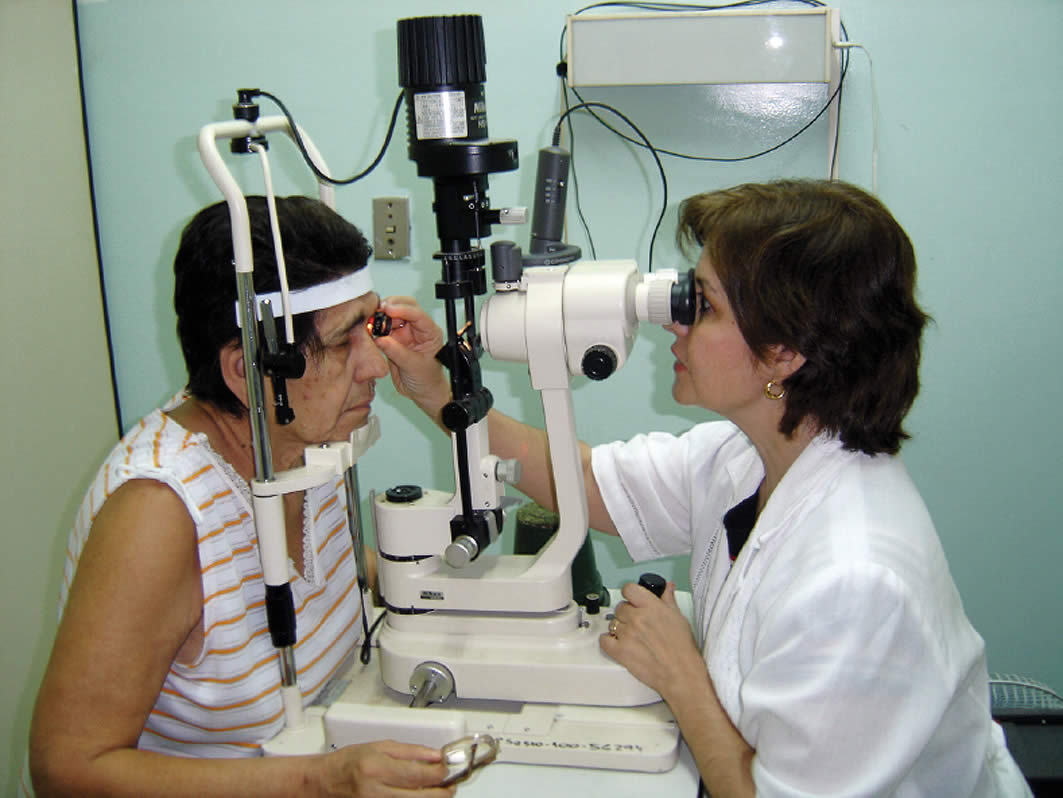
Photo 7. Accurate Diagnosis placed after examination by a doctor
Antiviral therapy in this case involves the use of antiviral drops, which contain interferon, as well as antiviral ointments (acyclovir). Since the virus enters a weakened body, and as the disease develops, a person loses more and more strength, immunomodulatory therapy should be carried out. The patient is prescribed vitamin and mineral complexes, you can also use homeopathic remedies.
Can be used in the treatment of viral conjunctivitis warm compresses and artificial tears. However, recipes traditional medicine should be used with caution. Warm compresses and heating in the presence of an inflammatory process are not used, since they only accelerate its further spread.

Photo 8. Vitamins are prescribed to support the strength of the body
In severe cases where symptoms are severe, corticosteroid eye drops may be used. At the same time, it is forbidden to use them without a doctor's prescription. It is also impossible to increase the course of treatment with them, since these drugs are characterized by a number of side effects.
The table shows the treatment algorithm for the membranous form of adenovirus conjunctivitis
Chosen drug among eye drops with viral conjunctivitis, it can become “Ophthalmoferon”. In cases of combined lesions and the addition of a bacterial infection, antibacterial drugs are included in the treatment regimen.
In the treatment of adenoviral conjunctivitis, the following can be used antiviral drops for eyes:
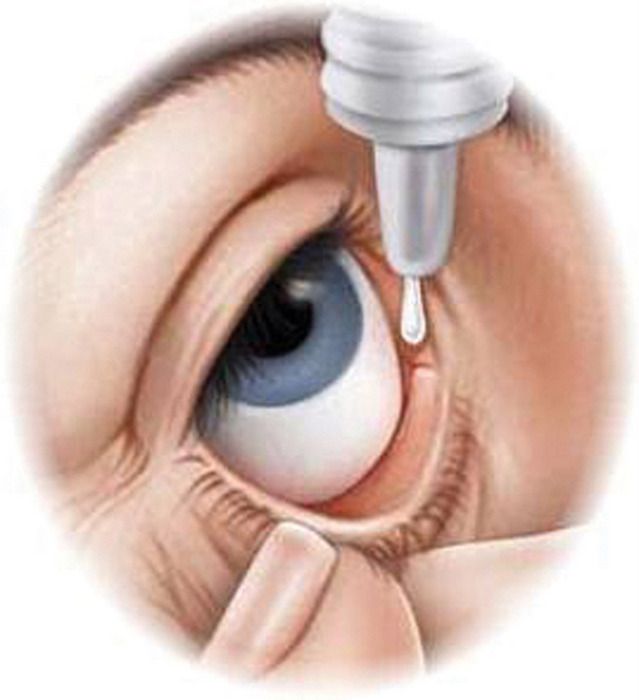
Photo 9. Eye drops - effective remedy from conjunctivitis
In addition to drops, antiviral ointments are also used in treatment. For this purpose, you can apply:
Before use folk recipes you should consult your doctor. Alternative treatment can only be used in combination with classical medicine: ointments and drops.
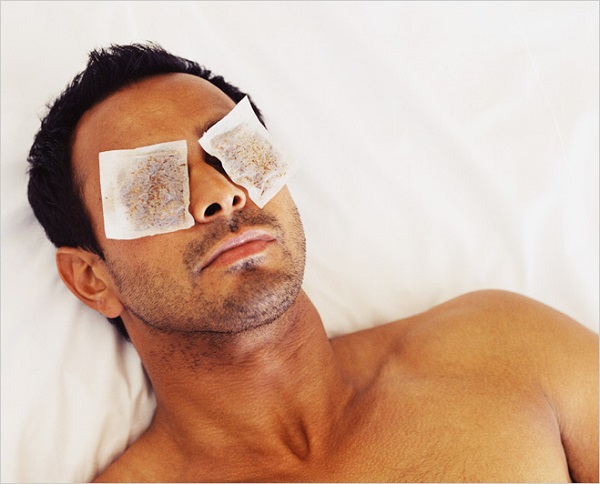
Photo 10. Folk remedies- additional treatment
Most effective methods treatment of conjunctivitis in terms of traditional medicine are lotions. You can use one of the following options:
Viral conjunctivitis, most often associated with an infection of the upper respiratory tract (adenoviral or herpetic), may appear with the common cold and / or sore throat.
Viral conjunctivitis is now very common. They are highly contagious and the disease in many cases becomes epidemic. Conjunctivitis is caused by a large number of viruses of different types.
According to modern data, more than 150 viruses are recognized as pathogenic for humans, and most of them can also affect the organ of vision in one form or another. Some eye diseases of this genesis (for example, epidemic viral keratoconjunctivitis and pharyngoconjunctival fever) were described at the beginning of the last century (Fuchs E, 1889). However, their adenoviral nature was established much later - in the early 1960s. (Paroff W.E. et al., 1954; Jawetz E. et al., 1955 and others). Some viral eye lesions have become known only recently. So, in 1969-1970. in African countries, a pandemic of a previously unknown epidemic hemorrhagic conjunctivitis arose, the causative agent of which was enterovirus-70, which is part of the picornavirus group (Kono R. et al., 1972, etc.).
Herpesviruses also play a significant role in eye pathology. However, they affect its tissues in an endogenous way, and therefore are practically not dangerous in epidemiological terms, which significantly differs from adeno- and picornaviruses. Active study of adenoviruses began in 1952.
To date, more than 45 different types of pathogens of this group have been identified immunologically, of which 28 have been isolated from humans. It has been established that serotypes A-3 and A-7 cause the development of pharyngo-conjunctival fever or, as they say more often now, adenovirus conjunctivitis (AVK), and A-8 - epidemic keratoconjunctivitis (ECC). All adenoviruses are 60 to 86 nm in size, multiply in the nuclei of epithelial cells and share a common antigen. Their core is made up of double-stranded DNA. They survive well in medicinal solutions, in particular in eye drops. They are inactivated with 0.5 and 1% solutions of chloramine and 5% phenol solution. The group of picornaviruses includes small (25-30 nm) and simple RNA viruses, including enterovirus-70, which is the causative agent of epidemic hemorrhagic conjunctivitis (EHC).
Signs (symptoms) of viral conjunctivitis
- Profuse lachrymation.
- Eye irritation.
- The eye is red.
- Lesions at the beginning of one eye, with frequent extension to the other.
Herpetic conjunctivitis.
This type of inflammation of the mucous membrane of the eye causes the herpes simplex virus. Most often, children get sick. The herpes virus usually affects one eye. The course of the disease is blurred, sluggish. The disease proceeds for a long time. Almost always, the process is accompanied by a rash of herpetic vesicles on the skin of the eyelids.
Herpetic conjunctivitis can be:
catarrhal
follicular or vesicular-ulcerative.
The catarrhal form of herpetic conjunctivitis is characterized by ease of flow. The manifestations of the disease are mild. Mucous discharge from the eyes, its amount is small. Occasionally, bacterial flora attaches and the discharge from the eye becomes purulent. Redness of the conjunctiva of the eyes is mild.
In the follicular form, follicles (vesicles) form on the conjunctiva. The most severe is the vesicular-ulcerative form of herpetic conjunctivitis. At the same time, erosions or ulcers form on the conjunctiva of the eyelids and the edges of the eyelids. The sores are covered with a thin film. There are complaints of lacrimation, the inability to look at the light.
adenovirus conjunctivitis.
Adenovirus conjunctivitis is also called pharyngoconjunctival fever. The viral nature of this disease has only recently been elucidated. With adenoviral conjunctivitis, in addition to eye damage, pharyngitis occurs, an increase in body temperature, which occurs at the beginning of the disease. Later, conjunctivitis joins, first on one, then on the second eye. The eyelids swell. The mucous membrane of the eye turns red. A scanty clear mucous discharge appears.
There are three forms of this disease:
At catarrhal form of adenoviral conjunctivitis the phenomena of an inflammation are expressed slightly. Redness is small, the amount of discharge too. The flow is easy. The duration of the illness is up to one week.
Occurs in 25% of cases membranous form of adenoviral conjunctivitis. With this form, thin films of a grayish-white color form on the mucous membrane of the eye, which can be easily removed with a cotton swab. Sometimes the films can be tightly soldered to the conjunctiva, a bleeding surface is exposed under them. In this case, it may be necessary to conduct an examination for diphtheria. After the disappearance of the films, there are usually no traces left, but sometimes mild scars may appear. Pinpoint hemorrhages and infiltrates (seals) may also occur in the conjunctiva, which completely resolve after recovery.
At follicular form of adenoviral conjunctivitis small bubbles appear on the mucous membrane of the eye, sometimes they are large.
Epidemic keratoconjunctivitis.
This type of keratoconjunctivitis is extremely contagious. It strikes adult population. Entire families and groups get sick. Cause epidemic keratoconjunctivitis one of the types of adenoviruses. The infection is transmitted by contact through dirty hands, household items, linen. Possible infection with medical ophthalmic instruments, through the hands of medical personnel.
From the moment of infection to the onset of the disease takes about a week. At first, diseases may appear headache, mild weakness, sleep disturbance. At first, one eye becomes ill, but soon the other also joins. There are complaints about the feeling of clogging of the eye, lacrimation, discharge from the eyes. The eyelids look swollen, the mucous membrane is reddened. In the conjunctival sac is a moderate amount of mucopurulent discharge. Sometimes thin films form on the conjunctiva, which are easily removed with a cotton swab.
May enlarge and become painful The lymph nodes in the submandibular region and near the ear. A week later, the condition improves and all manifestations seem to disappear. A few days after the improvement, lacrimation and the feeling of clogging of the eyes intensify, photophobia appears. Sometimes there is a feeling of deterioration of vision. This joins the inflammatory process in the cornea of the eye, on which multiple point opacities occur.
The illness can last up to two months. Upon recovery, corneal opacities usually resolve completely and vision is restored. After the postponed epidemic keratoconjunctivitis remains immune for life.
Complications of viral conjunctivitis
One of the complications of conjunctivitis leading to severe consequences with possible loss of vision is keratitis. That is why it is so important to start treating conjunctivitis at the right time.
Conjunctivitis is determined by routine slit lamp examination. In some cases, a smear / scraping of the conjunctiva may be needed to determine appearance microorganism and the type of cellular reaction of the macroorganism, as well as taking material for inoculation into culture media for growing bacteria and their more accurate identification.
Diagnosis of adeno- and picornavirus eye diseases is based mainly on the characteristics of their clinical picture and laboratory results. Among the latter, particular importance is attached to cytological, immunofluorescence (MFA) and enzyme immunoassay (ELISA) studies. The cytological method is based on the identification characteristic changes epithelial cells stained according to Romanovsky-Giemsa. During the adenoviral process, they show degeneration of epithelial cells with vacuolization of nuclei and decay of chromatin, the presence of monocytes with intraplasmic inclusions and neutrophils in the exudate.
Viral conjunctivitis requires the appointment of antiviral drops, interferon and antiviral ointments. Of particular importance is the restoration of the patient's immune status, since a viral infection of the conjunctiva is usually associated with a weakening defensive forces organism. Multivitamins with trace elements in combination with herbal remedies for stimulating immunity will only benefit and speed up recovery.
Warm compresses and artificial tear drops are used to relieve the symptoms of viral conjunctivitis. Eye drops containing corticosteroid hormones may be prescribed to relieve severe signs of conjunctivitis. However, their long-term use has a number of side effects.
specific antiviral drug for the treatment of viral conjunctivitis, Ophthalmoferon eye drops containing recombinant interferon type alpha 2 are used. When a secondary bacterial infection is attached, drops containing antibiotics are prescribed. With conjunctivitis caused by the herpes virus (herpetic conjunctivitis), agents containing acyclovir and ophthalmoferon drops are prescribed.
With conjunctivitis, you should not touch your eyes with your hands, it is important for patients to follow the rules of personal hygiene, wash their hands thoroughly and use only their own towel so as not to infect other family members. Viral conjunctivitis usually resolves within 3 weeks. However, the healing process can take more than a month.
The course of treatment for viral conjunctivitis usually lasts one to two weeks. Because this disease is not caused by bacteria, viral conjunctivitis does not respond to antibiotics. artificial tears also help to remove unpleasant symptoms conjunctivitis.
Conjunctivitis caused by the herpes virus can be treated with antiviral eye drops, ointment and/or antiviral drugs.
How can I prevent the development of conjunctivitis?
If you or your child has conjunctivitis:
Do not touch or rub the infected eye.
Wash your hands frequently with soap and warm water.
Wash out any particles that get into your eyes twice a day, using a new cotton swab or paper towel each time. Afterwards, wash your hands with soap and warm water.
Wash your bedding, pillowcases and towels in hot water and detergent.
Do not wear eye makeup.
Do not share your eye makeup with anyone.
Never wear another person's contact lenses.
Wear glasses instead of contact lenses. Throw away your used lenses and make sure you use them for all occasions protective glasses.
Don't share things like unwashed towels or glasses.
Wash your hands after applying eye drops or ointment to your or your child's eyes.
Do not use eye drops that you put in an infected eye and then use in an uninfected eye.
If your child has bacterial or viral conjunctivitis, keep your child at home until he or she is no longer considered infectious.